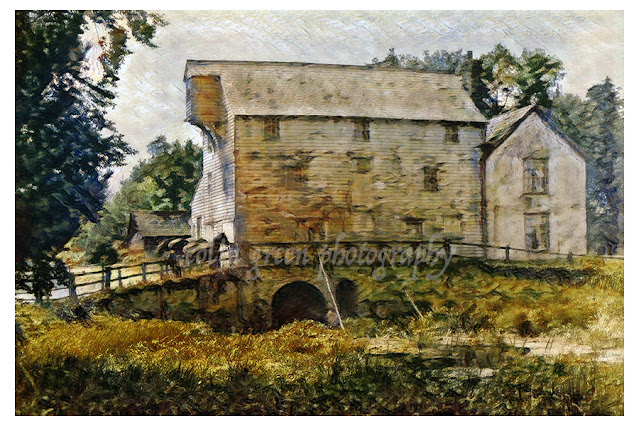Jumble Hole is a wooded Valley that runs down from Blackshaw Head towards Eastwood between Hebden Bridge and Todmorden. Jumble Hole Clough is the water that runs down it flowing towards the River Calder, although historically this was known as Blackshaw Clough.
The water was used to power a number of mills along its path and a few dwellings were also scattered alongside the stream. Water from Jumble Hole was also used in baptisms by the nearby Nazebottom Baptist Church. This waterway is the traditional boundary between Yorkshire and Lancashire.
I was walking along this stretch of Woodland on the 4th May 2022 and whilst passing a bridge over the clough I discovered and abandoned dwelling that I had to picture. I also did a couple of artworks based around the fireplace that still remains. They can be seen below or on my Clickasnap profile where they are full size, resolution and un-watermarked. They were taken using a Nikon d3300SLR camera.
 |
| Inside the abandoned dwelling I found. This artwork is based on a photo that can be seen below. |
 |
| Jumble Hole Clough. |
 |
| Jumble Hole Clough, the abandoned dwelling is just to the right of the picture. |
 |
| Another artwork of the inside of the abandoned dwelling. |
 |
| The abandoned dwelling, it was the top of the fireplace, just visible that made me go and take a look around. |
 |
| Jumble Hole Clough weir. |
 |
| The photo of the fireplace my artworks are based on. |
Thanks for looking and please take a moment to share. All the images can also be seen on Clickasnap.
All the pictures remain the copyright of Colin Green.

















































